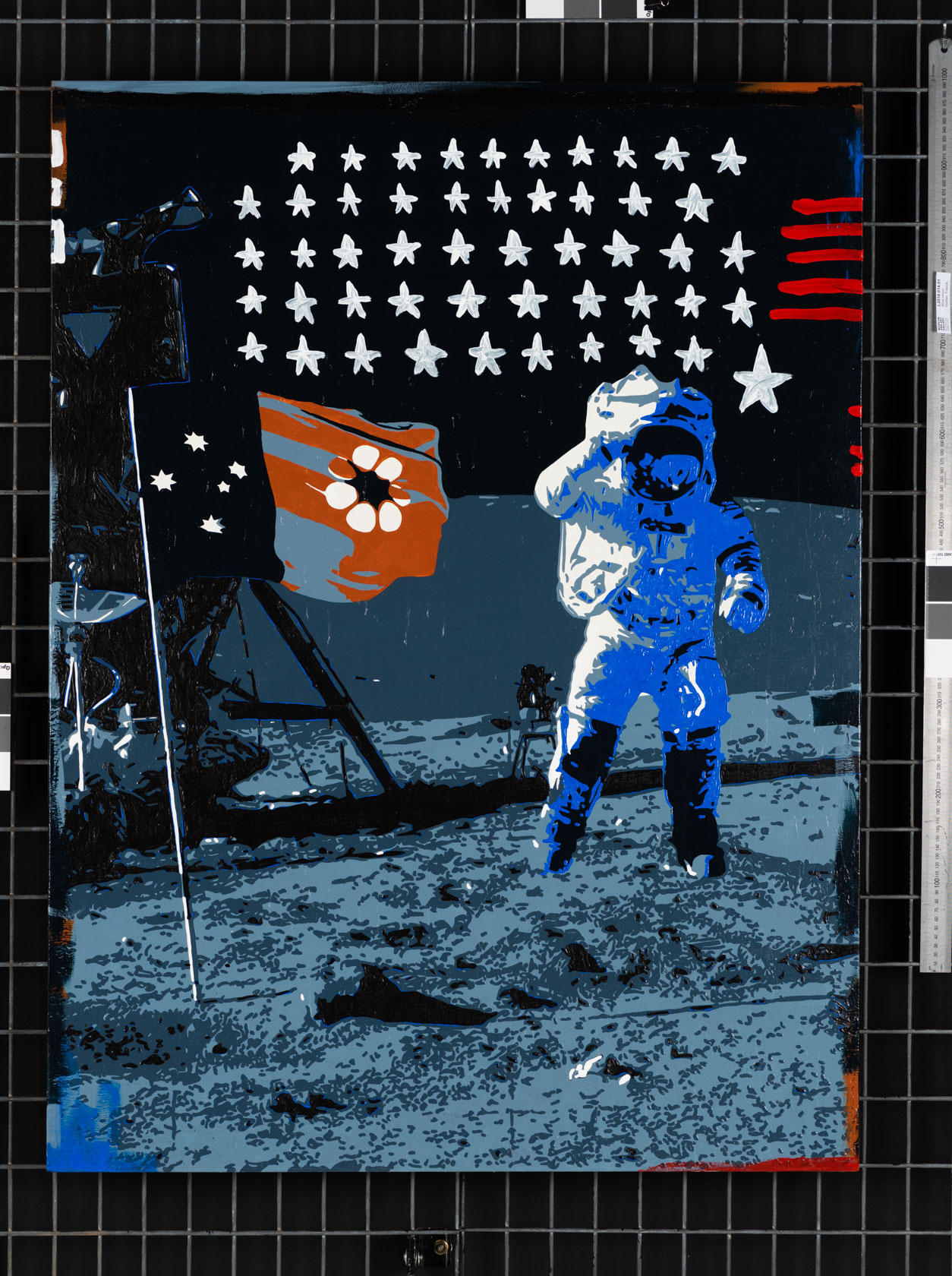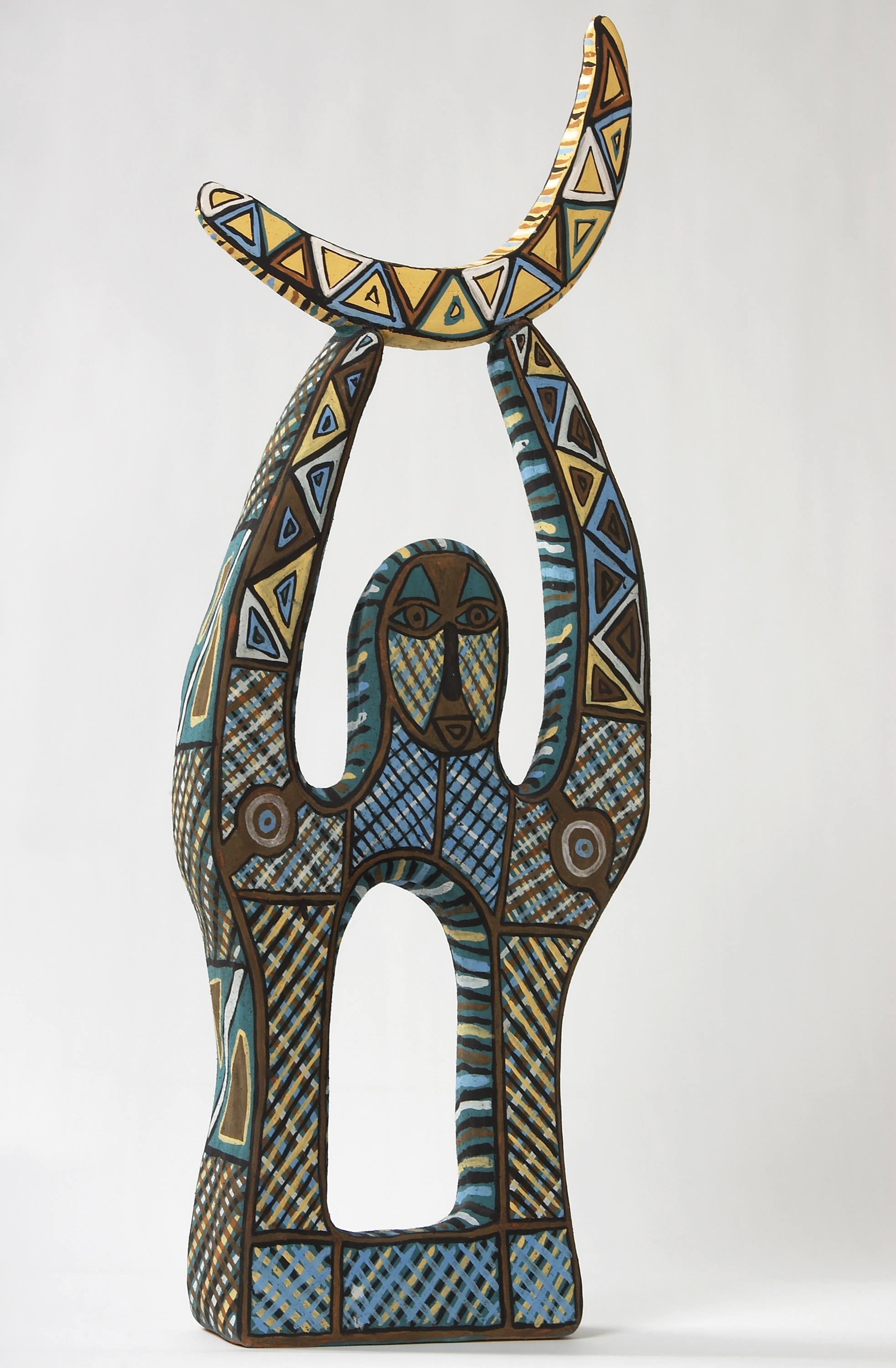Between the Moon and the Stars
The Museum and Art Gallery of the Northern Territory’s (MAGNT) next exhibition, Between The Moon and The Stars, explores the relationship between our closest interstellar neighbour, the Moon, and the twinkling skies that surround it, and how their combined forces affect life on earth.
By Tamara Howie
Since the dawn of time the gaze of humankind has always looked towards the stars.
The night skies have predicted futures, told stories of intergalactic pasts, and guided travellers, wanderers and nomads in their journeys over the lands and seas.
Between The Moon and The Stars combines art and science to celebrate the 50th anniversary of the culmination of eons of human curiosity and one of humanity's greatest achievements – the Apollo 11 Moon landing.
More than 600 million people were glued to their screens to view the historic moment in 1969, but Darwinites had to simply stare at the sky and tune in to the radio because TVs didn’t make it to the Top End until 1971.
Local artist Franck Gohier stumbled across an audio recording his parents took of the historic moment while digging through their record collection as a teenager.
“The fact my parents recorded it meant I knew it was a momentous event,” he says.
 Gohier painted a triptych for the exhibition, which features artwork from public and private collections and scientific displays.
Gohier painted a triptych for the exhibition, which features artwork from public and private collections and scientific displays.
In his triptych, Gohier continues his idea of viewing Darwin as the centre of the universe and includes lunar motifs by iconic artists. The ideas were sparked when he picked up his old record of Pink Floyd’s Dark Side of the Moon.
“With the painting I was just having a bit of fun with everything about the moon and the word lunar,” he says.
“It’s all about the age of enlightenment and how, as humans, we’ve come from a point of primitivism to the age of reason and science, and now we’ve gone full circle.
“(It’s highlighting the fact) we’ve made all these incredible achievements like the moon landing, and then we get (people) like Trump in power, and he just wants to build a wall, like a baby with Duplo blocks.”
The exhibition is co-curated by senior curator of annelids, Dr Chris Glasby and curator of Australian art, Dr Wendy Garden. The pair have combined the fact and fiction around Earth’s natural satellite and its sky-high companions.

Glasby, an expert in annelids (segmented worms), says his interest was piqued when the exhibition was proposed because the moon had a dramatic impact on some worm species.
“There are some species of worms that have synchronised breeding with the moon phases,” he says.
“It’s as regular as clockwork and the people living in the places where the breeding occurs know how regular they are and are ready to catch them – they’re pretty tasty.”
Glasby then dug deeper to discover time keeping rituals and ceremonies around the world associated with the yearly breeding and migration cycles of animals, including the palolo worms, biting midges, turtles and hammerhead sharks.
“We delve into the idea of animals being seasonal calendars,” he says.
“So when an animal – like a migrating bird – arrives at a particular island, or hammerhead sharks arrive to breed or feed, their arrival heralds a change in seasonal activities, which is often depicted in artworks.”
The exhibition reflects a national push to see the arts integrated with STEM (science, technology, engineering and maths) subjects, which recognises that the two fields can complement and challenge one another’s perspective and ideas.
“The artistic side illuminates what I do a little more, and the science enriches the artistic point of view,” Glasby says.
While no one is sure what the next 50 years will hold for interstellar travel, one thing is for sure – there are no limits to human curiosity.
The exhibition opens with a special launch event on March 21.
Thu 21 Mar – Sun 29 Mar ‘20 | Opening Thu 21 Mar, 6.30pm | Magnt | Free | Magnt.net.au
Image credits: Thumbnail, header and above: Franck Gohier, 'Blue moon', (detail), 2017, triptych, synthetic polymer paint on board, 120 x 270 cm; courtesy the artist and Mitchell Fine Art.
Mark Virgil Puatjimi, 'Tapara (Japarra)', 2001, hand built ceramic, 100 x 40 x 10 cm; image courtesy MAGNT.
